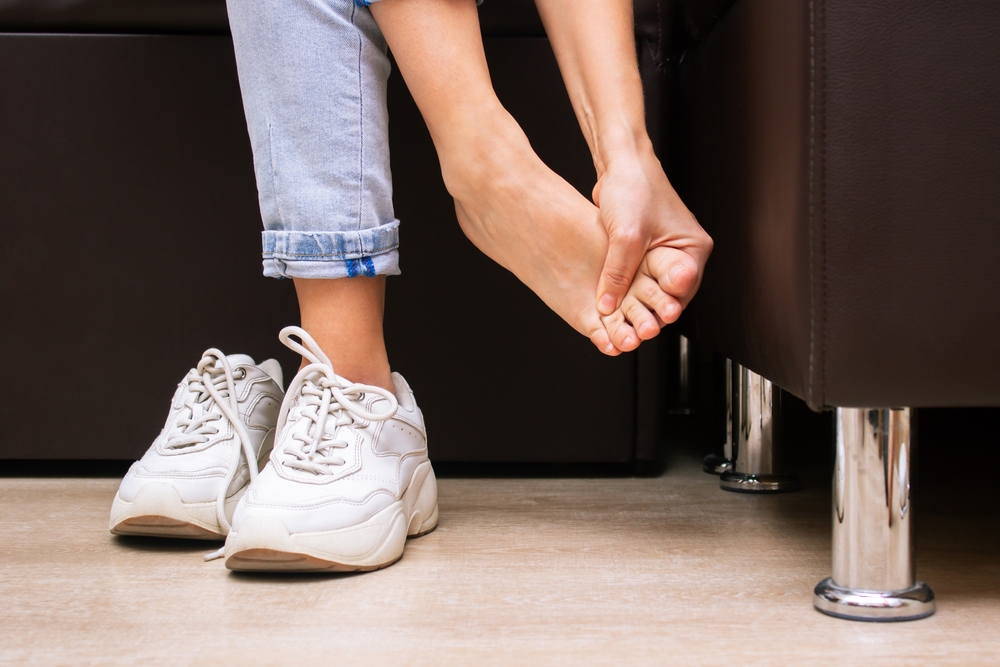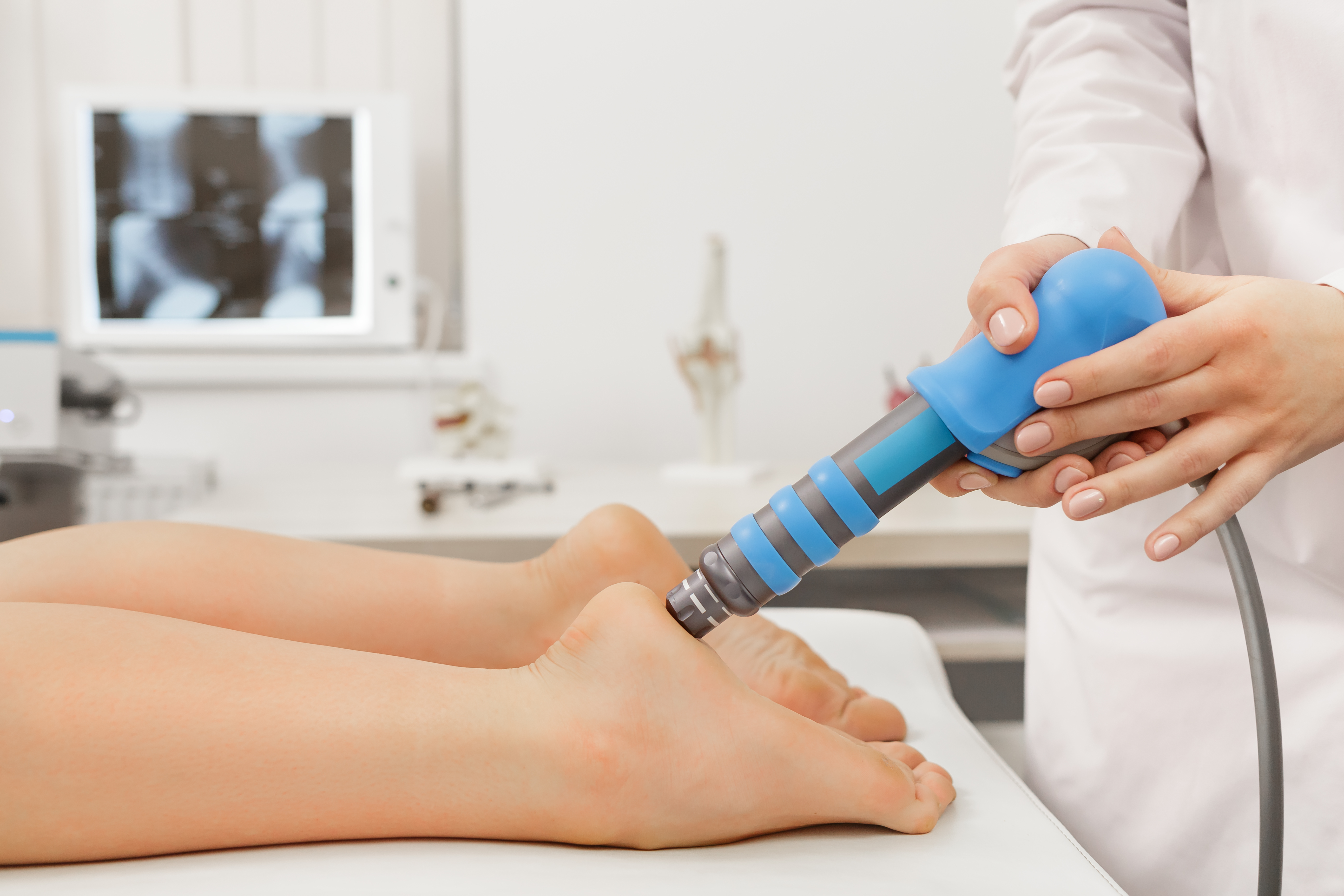Foot Pain on the Strip? What Visitors Should Know About Walking Injuries and Recovery
- Dr. Chris Colgin

- Jun 13
- 4 min read
Las Vegas might be known for its high-energy nightlife, dazzling shows, and endless attractions—but there’s something else visitors frequently take home besides memories: sore feet. From the long stretches of casino floors to miles walked on the Strip in unsupportive shoes, foot pain recovery becomes a necessary concern for many who didn’t anticipate the physical toll of sightseeing.
The average tourist walks over 20,000 steps per day in Las Vegas. Do that in unsupportive footwear or while dehydrated, and your body is bound to push back. Foot strain, plantar fasciitis, swollen ankles, and stress on the lower extremities are more common than most realize. Yet with a proactive approach, these issues don’t have to derail your trip—or linger long after it ends.
How the Vegas Experience Can Trigger Foot Pain
Have you ever noticed how quickly discomfort can creep in after a day of walking the Strip? Many don’t. The distraction of excitement, neon lights, and adrenaline often masks the stress accumulating in the feet. But your body keeps the score.
Hard surfaces like marble, concrete, and tile—common throughout casinos and hotels—offer no shock absorption. Pair that with hours of standing or walking without rest, and the connective tissues in your feet begin to fatigue. Add flip-flops or dress shoes into the mix and the foot’s arch loses its support, leading to microtears in the plantar fascia or excess strain in the ankles and calves.

Plantar fasciitis is especially common among visitors who aren’t used to prolonged walking. This painful condition results from inflammation of the thick band of tissue that runs along the bottom of the foot, connecting the heel to the toes. Even one long day of excessive walking on unforgiving surfaces can trigger a flare-up.
Some tourists even mistake foot pain for a minor nuisance, unaware that repetitive trauma to the feet can trigger longer-term issues like Achilles tendinitis, neuromas, or joint inflammation. These types of injuries, if ignored, can spiral into more serious problems that affect posture, gait, and overall mobility.
What Makes Foot Pain Worse?
Ignoring early symptoms is the biggest mistake. Mild heel tightness in the morning, ankle stiffness at night, or an aching ball of the foot might seem harmless at first. But left untreated, these signs can escalate into persistent conditions that require far more time—and energy—to recover from.
Wearing improper footwear is a close second. Fashion-forward sandals, high heels, or completely flat shoes may look good in photos but do very little to protect your joints. And dehydration, common in the dry desert climate, can silently contribute to inflammation and muscle cramping, slowing the body’s natural recovery process.
Another factor? Lack of movement variety. While it may seem counterintuitive, walking for hours in the same pattern puts repetitive strain on the same muscles and joints. Without taking breaks to stretch or change pace, this continuous stress leads to breakdown rather than buildup.
Smart Strategies for Fast Foot Pain Recovery
The best way to avoid foot injuries is to stay ahead of them. Choose footwear with cushioned soles and proper arch support—athletic shoes or orthotic inserts go a long way. Break up long walking days with short rest breaks, and hydrate often to support joint function and tissue repair.
Stretching before and after your day can also help. Focus on the calves, Achilles tendon, and the plantar fascia itself. Even five minutes of gentle stretching can improve circulation and reduce muscle tightness. At night, elevate your feet above heart level to minimize swelling and give your joints a chance to rest.
If discomfort has already started to settle in, early intervention is key. Gentle stretching of the calves and arches, elevation of the feet at night, and the use of cold compresses can help reduce inflammation and pain. Over-the-counter anti-inflammatory creams or topical magnesium can offer temporary relief—but don’t let that fool you into thinking the problem is resolved.
And if you’ve reached the point where each step feels like a challenge, it’s time to go beyond self-care.
Why Professional Help Accelerates Recovery
Foot pain recovery doesn't have to take weeks. Professional therapies can dramatically speed up healing—especially when tailored to target the root causes of pain.
Chiropractic care is often overlooked as a foot-specific solution, yet targeted adjustments to the foot and ankle joints can restore alignment, relieve pressure, and enhance mobility. Treatments focused on extremities—rather than just the spine—can be especially effective for visitors recovering from acute walking injuries. Seek the help of a hand and foot chiropractor to get precise, joint-specific relief that promotes faster healing.

Shockwave therapy, also known as SoftWave tissue regeneration technology, uses acoustic waves to stimulate blood flow and promote cell regeneration in damaged foot tissue. This non-invasive approach is ideal for conditions like plantar fasciitis and chronic inflammation. The waves encourage the body’s natural repair processes, reduce inflammation, and relieve pain without needles or medication. Many athletes have experienced success with shockwave therapy, and the same technology works wonders for walking-related injuries.
Another beneficial modality is red light therapy, which helps accelerate healing at the cellular level by boosting ATP (energy production) and reducing oxidative stress in the tissues. Combined with chiropractic adjustments and shockwave therapy, it creates a powerful recovery trifecta.
Chronic foot issues can also benefit from laser-enhanced spinal decompression, particularly when misalignment in the lower back contributes to nerve pain radiating into the legs or feet. These advanced techniques offer deep, targeted relief without surgery.
Nutrition shouldn’t be overlooked either. A diet rich in leafy greens, omega-3-rich fish, and turmeric, can enhance your recovery from the inside out. How nutrition helps in sports injury recovery is often underestimated—yet it plays a major role in how fast and how well your body rebounds from physical stress.
Move from Pain to Progress
Walking the Strip shouldn’t come at the expense of your foot health. While most cases of foot pain are preventable or treatable, the recovery process doesn’t have to be long or complicated. With the right blend of movement-based therapy, supportive treatments, and proactive care, pain relief is within reach.
At Optimal Health Members, we dedicate our time to helping people move better and feel stronger—without surgery. Whether you’re dealing with acute pain from a day on your feet or chronic issues that have flared up during your trip, we’re here to help you take your next step pain-free.
Don’t wait. Book your session today and let’s get you back to doing what you love—with every step feeling better than the last.






コメント